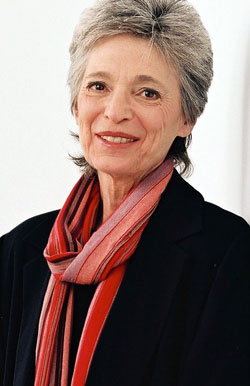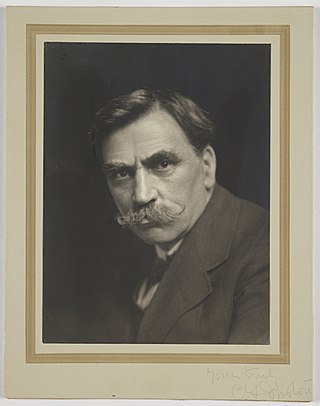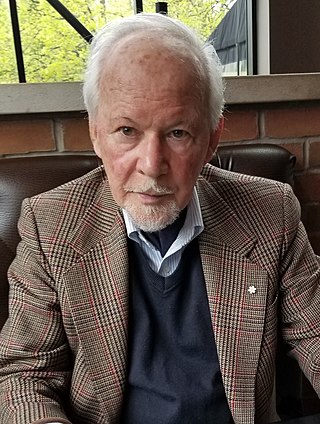Related Research Articles

Joseph Nicéphore Niépce, was a French inventor and one of the earliest pioneers of photography. Niépce developed heliography, a technique he used to create the world's oldest surviving product of a photographic process: a print made from a photoengraved printing plate in 1825. In 1826 or 1827, he used a primitive camera to produce the oldest surviving photograph of a real-world scene. Among Niépce's other inventions was the Pyréolophore, one of the world's first internal combustion engines, which he conceived, created, and developed with his older brother Claude Niépce.
Lee Friedlander is an American photographer and artist. In the 1960s and 1970s, Friedlander evolved an influential and often imitated visual language of urban "social landscape," with many of his photographs including fragments of store-front reflections, structures framed by fences, posters and street signs. His work is characterized by its innovative use of framing and reflection, often using the natural environment or architectural elements to frame his subjects. Over the course of his career, Friedlander has been the recipient of numerous awards and his work has been exhibited in major museums and galleries worldwide.

Heliography from helios, meaning "sun", and graphein (γράφειν), "writing") is the photographic process invented, and named thus, by Joseph Nicéphore Niépce around 1822, which he used to make the earliest known surviving photograph from nature, View from the Window at Le Gras, and the first realisation of photoresist as means to reproduce artworks through inventions of photolithography and photogravure.

Kusakabe Kimbei was a Japanese photographer. He usually went by his given name, Kimbei, because his clientele, mostly non-Japanese-speaking foreign residents and visitors, found it easier to pronounce than his family name.

Erwin Blumenfeld was an American photographer of German origin. He was born in Berlin, and in 1941 emigrated to the United States, where he soon became a successful and well-paid fashion photographer, working as a free-lancer for Harper's Bazaar, Life and American Vogue. His personal photographic work showed the influence of Dadaism and Surrealism; his two main areas of interest were death and women. He was expert in laboratory work, and experimented with photographic techniques such as distortion, multiple exposure, photo-montage and solarisation.

Lynne Cohen was an American-Canadian photographer.

Pierre Lanith Petit was a French photographer. He is sometimes credited as Pierre Lamy Petit.

Helmut Erich Robert Kuno Gernsheim was a historian of photography, a collector and a photographer.
Arnaud Maggs was a Canadian artist and photographer. Born in Montreal, Maggs is best known for stark portraits arranged in grid-like arrangements, which illustrate his interest in systems of identification and classification.
Alain Paiement is a Canadian artist. His work is mainly made from photography in form of installations, sculptures, and photomontage. His themes are related to geography, topography and architecture and mainly concerned by the construction of vision. A photo of the French artist Pierre Estable's apartment titled "Living Chaos" has been exhibited at the Galerie Clark from May 10 to June 17, 2001.
Josip Klarica (1946-2020) was a Croatian artist working in the mediums of film and photography.

Charles Chusseau-Flaviens was a self-employed French photojournalist from the 1890s to the 1910s. His distribution of other photographer's work for publication created one of the first photo press agencies, based in Paris. Chusseau-Flaviens' by-line appeared on numerous photographs from all over Europe as well as from Africa, the Middle East, the Far East and North America. Subject matters included formal and informal portraits of European royalty, political figures and celebrities in addition to scenes of daily life. According to researchers, no biographical information about Chusseau-Flaviens is known.
Angela Grauerholz D.F.A. is a German-born Canadian photographer, graphic designer and educator living in Montreal.
Clara Gutsche is an American-born Canadian photographer, educator and art critic living and working in Montreal.

Charles Frederick Inston (1855–1917) was a British pictorialist photographer. He was elected a member of the Royal Photographic Society in 1896 and Fellow in 1901 and was organiser of the Northern Photographic Exhibition from 1904. He became Secretary then President of the Liverpool Amateur Photographic Society.
Maia-Mari Sutnik, was the first Curator of the Curatorial Department of Photography at the Art Gallery of Ontario in Toronto.
Blake Fitzpatrick FRSC is a photographer, curator and writer, who is concerned with the photographic representation of the nuclear era, contemporary militarism and the Berlin Wall as a mobile ruin.
Sophie Hackett is the Curator of Photography at the Art Gallery of Ontario, Toronto.

James W. Borcoman D.F.A. LL. D., also known as Jim Borcoman, was the founding curator of photography, National Gallery of Canada from 1971 to 1994. He was a pioneer in promoting photography as an art form in Canada, having established the Photographs Collection at the National Gallery in 1967 as the first of its kind in Canada, and developing its growth to over 19,000 objects, resulting in a collection known for the quality of its nineteenth and twentieth century holdings and for its exhibitions and publications. He also promoted contemporary Canadian photographers and was himself a photographer with work in the collection of the National Gallery of Canada.
Alinka Echeverría is a Mexican-British artist and visual anthropologist. Echeverría's research-based works explore issues of visual representation through the media of photography, video and installation, focusing on the deconstruction of the masculine and colonial gaze.
References
- ↑ "It Takes One: Robert Burley | The Cultural Landscape Foundation". www.tclf.org. Retrieved July 9, 2021.
- ↑ "Ryerson researchers named Fellows of the Royal Society of Canada". Ryerson University. Retrieved October 12, 2021.
- ↑ "Name authority details". gencat4.eloquent-systems.com. Retrieved October 8, 2021.
- ↑ Grady, Michelle (Summer 2020). "Keeping film alive: How the Kodak Canada Heritage Collection gained new life as a special collection" (PDF). Ryerson Magazine. Summer 2020: 46.
- ↑ Adams, James (April 22, 2005). "Ryerson to receive major photo archive". Globe and Mail. Retrieved October 5, 2005.
- ↑ Kirschenbaum, Megan (January 1, 2012). Photographic Preservation; On Becoming A Professionalized Field. Ryerson University Library (thesis). pp. 18–19. doi:10.32920/ryerson.14660688.v1 . Retrieved October 12, 2021.
- ↑ "Robert Burley". National Gallery of Canada.
- ↑ "Implosions of Building 65 and 69, Kodak Park, Rochester, New York, from the portfolio The Disappearance of Darkness". artgallery.yale.edu.
- ↑ "Lake Huron/Craigleith #9 2002". tms.artgalleryofhamilton.com.
- ↑ "Results | Search Objects | George Eastman Museum". collections.eastman.org. Retrieved October 13, 2021.
- ↑ Canada, Library and Archives (July 20, 2017). "Record". www.bac-lac.gc.ca. Retrieved October 13, 2021.
- ↑ "FOMU Collectie". collection.fotomuseum.be. Retrieved October 13, 2021.
- ↑ Architecture (CCA), Canadian Centre for. "Search". www.cca.qc.ca. Retrieved November 10, 2021.
- ↑ "O'Hare Field photographs by Robert Burley [graphic]". chhiso.ent.sirsi.net. Retrieved November 10, 2021.
- ↑ "An Enduring Wilderness: Toronto's Natural Parklands". City of Toronto. September 7, 2017. Retrieved November 10, 2021.
- ↑ "Doris McCarthy Gallery – My City My Six: home/place". dorismccarthygallery.utoronto.ca. Retrieved November 10, 2021.
- ↑ "musée Nicéphore Niépce – Robert Burley". en.museeniepce.com. Retrieved November 10, 2021.
- ↑ "Robert Burley: La Disparition de l'Obscurité". Musée des beaux-arts du Canada. October 16, 2013. Retrieved November 17, 2021.
- ↑ "Robert Burley: The Disappearance of Darkness | Ryerson Image Centre". ryersonimagecentre.ca. Retrieved November 10, 2021.
- ↑ "Residue: The Persistence of the Real". www.vanartgallery.bc.ca. Retrieved November 10, 2021.
- ↑ Canadian Centre for Architecture (CCA). "Mellon Senior Fellows 2010". www.cca.qc.ca. Retrieved July 7, 2021.
- ↑ Toronto, Heritage. "Accidental Wilderness Tommy Thompson". Heritage Toronto. Retrieved November 10, 2021.